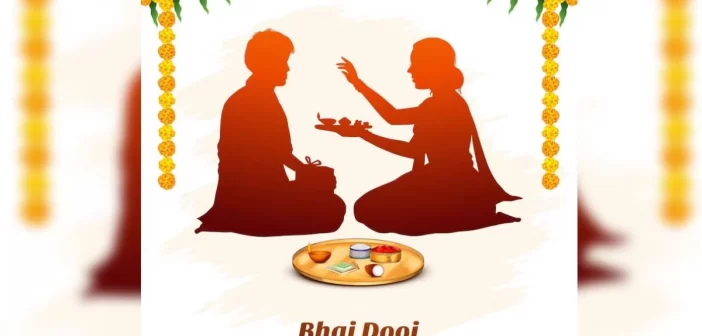Bhau Beej, also known as Bhai Dooj or Bhratri Dwitiya, is a cherished Hindu festival that concludes the five-day Diwali celebration. Celebrated on the second day of the Shukla Paksha (waxing moon) in the Kartik month, it shares its roots with Diwali’s spirit of light, family, and togetherness. Bhau Beej underscores the special relationship between brothers and sisters, making it a counterpart to Raksha Bandhan but with unique rituals and cultural significance across India.
Origins and Mythological Significance
Bhau Beej has a rich background in Hindu mythology. According to legend, Yama, the god of death, visited his sister Yamuna on this day. She warmly welcomed him, performed aarti, and placed a ceremonial tilak on his forehead. In return, Yama blessed her with prosperity and declared that brothers who receive tilak from their sisters on this day would enjoy long, healthy lives. Another popular tale recounts Lord Krishna’s visit to his sister Subhadra after his victory over the demon Narakasura, where she marked his forehead with a tilak in a protective and celebratory gesture.
Regional Variants and Rituals
The customs of Bhau Beej vary across India, with each region imparting its own flair. In Maharashtra, it’s celebrated as Bhau Beej and features a festive meal where sisters pray for their brothers’ well-being. In Bengal, it’s called Bhai Phonta, a day when sisters apply sandalwood and kajal (kohl) tilak on their brothers’ foreheads, followed by elaborate meals. In the northern states, especially in Uttar Pradesh and Haryana, Bhai Dooj is celebrated with offerings and the exchange of gifts, symbolizing familial affection and protection.
In each version of the celebration, a sister applies a sacred tilak on her brother’s forehead, performs an aarti, and presents him with sweets or a feast. Brothers reciprocate with gifts and promise to protect and support their sisters. The tilak, usually a mixture of vermilion and rice, symbolizes blessings, while the aarti represents the protection of divine light.
Ways of Celebration Across India
Modern celebrations often blend traditional and contemporary elements. Some families gather for festive meals, while others share gifts and sweets. Brothers and sisters separated by distance may connect over video calls or exchange heartfelt messages. In some urban settings, families use the day to share their Diwali festivities more broadly, inviting friends and neighbors to partake in the rituals. Social media has also contributed to the day’s modern observance, with siblings sharing memories and messages online to keep the tradition alive.
Cultural Significance
Bhau Beej emphasizes the deep-rooted values of family bonds and unity in Hindu culture. Diwali, as a whole, celebrates light and new beginnings, and Bhau Beej aligns with these values by honoring family unity. The day reminds families of their interconnectedness and the protective, supportive roles that siblings play in each other’s lives. It also reflects the festival’s broader message of dispelling negativity and nurturing relationships, fitting seamlessly into the Diwali ethos of goodwill and togetherness.
Conclusion
Bhau Beej not only marks the end of Diwali but also underscores the lifelong bond between siblings, characterized by love, protection, and mutual respect. The festival is a beautiful celebration of family values, one that strengthens sibling relationships with every ritual and shared tradition. Through Bhau Beej, families across India embrace the spirit of Diwali one last time, closing out the festivities with warmth, love, and unity. This cherished day reflects the essence of Indian family dynamics, where festivals like Bhau Beej are woven into the cultural fabric, sustaining traditions that are as relevant today as they were in ancient times.
By celebrating Bhau Beej, families continue the legacy of honoring relationships, bridging past traditions with present-day bonds, and bringing Diwali to a heartfelt close.





